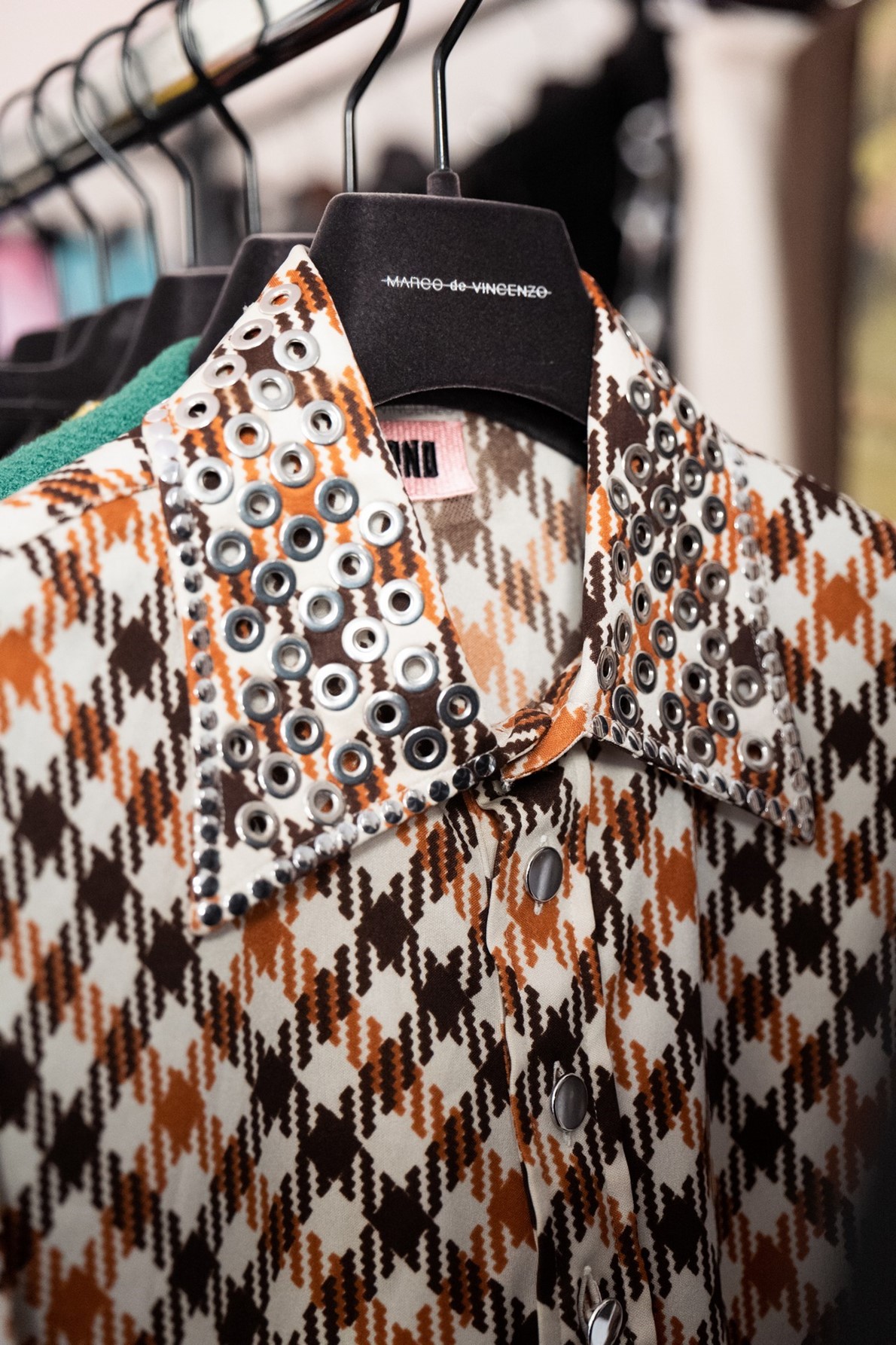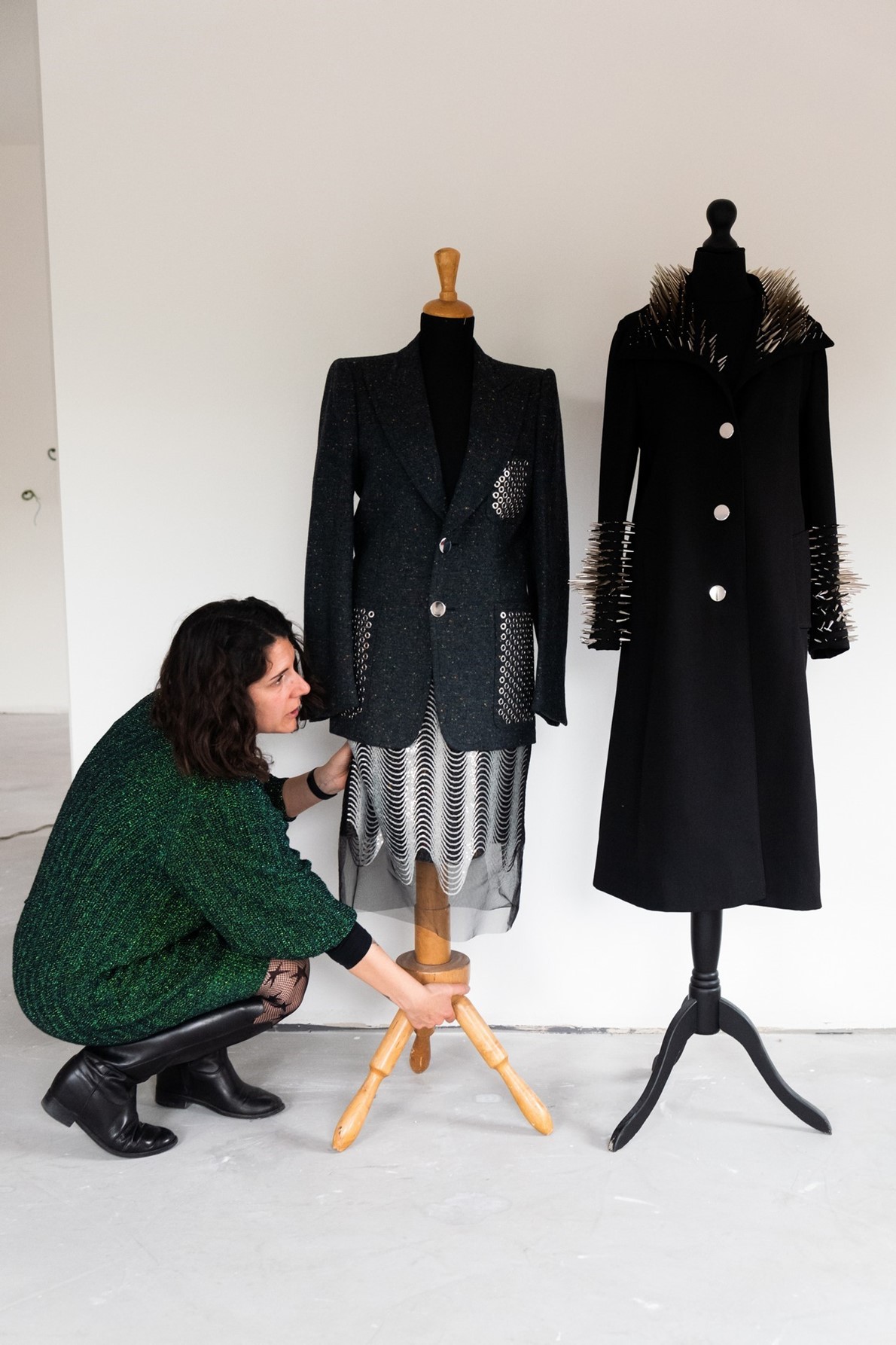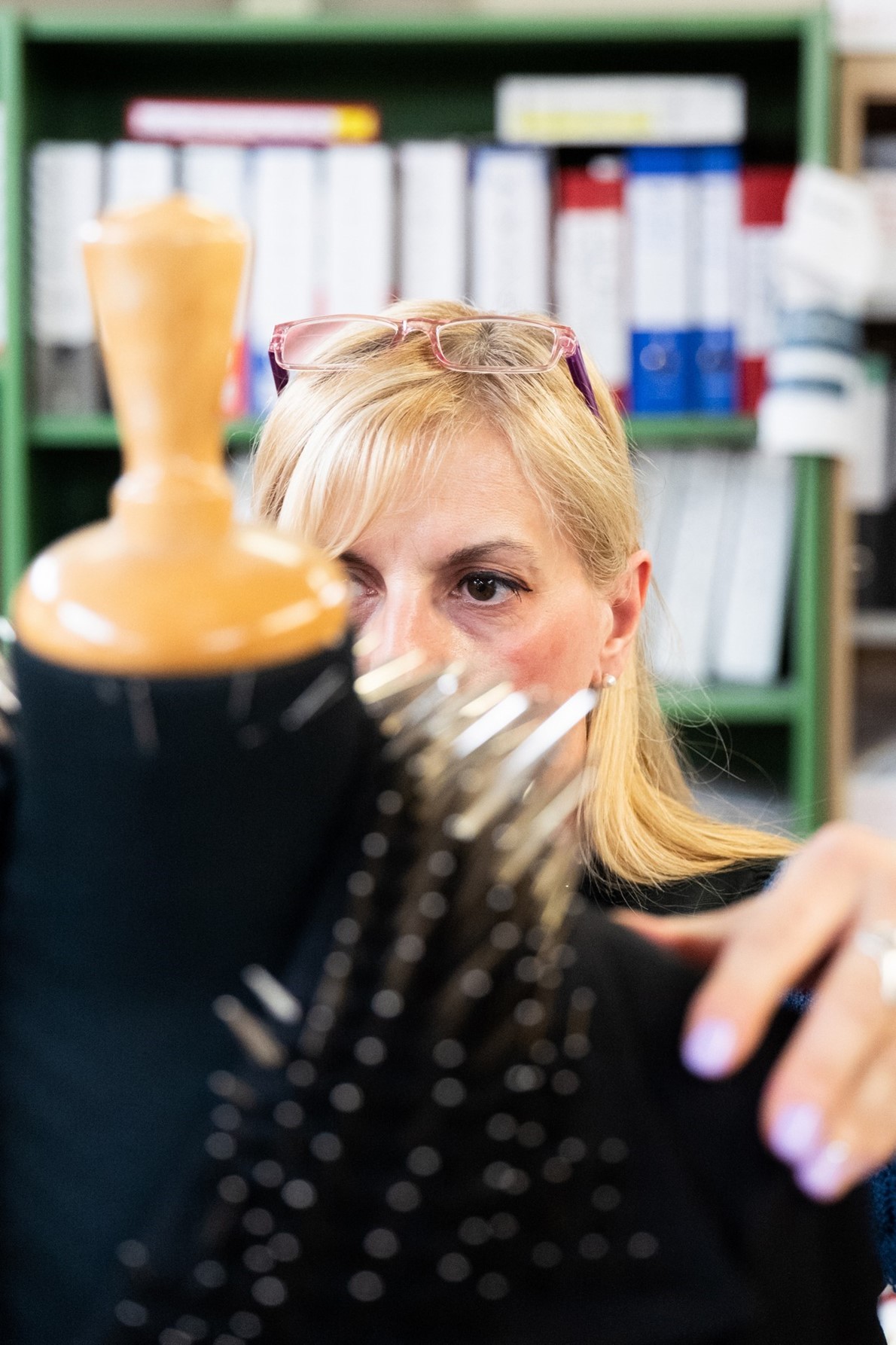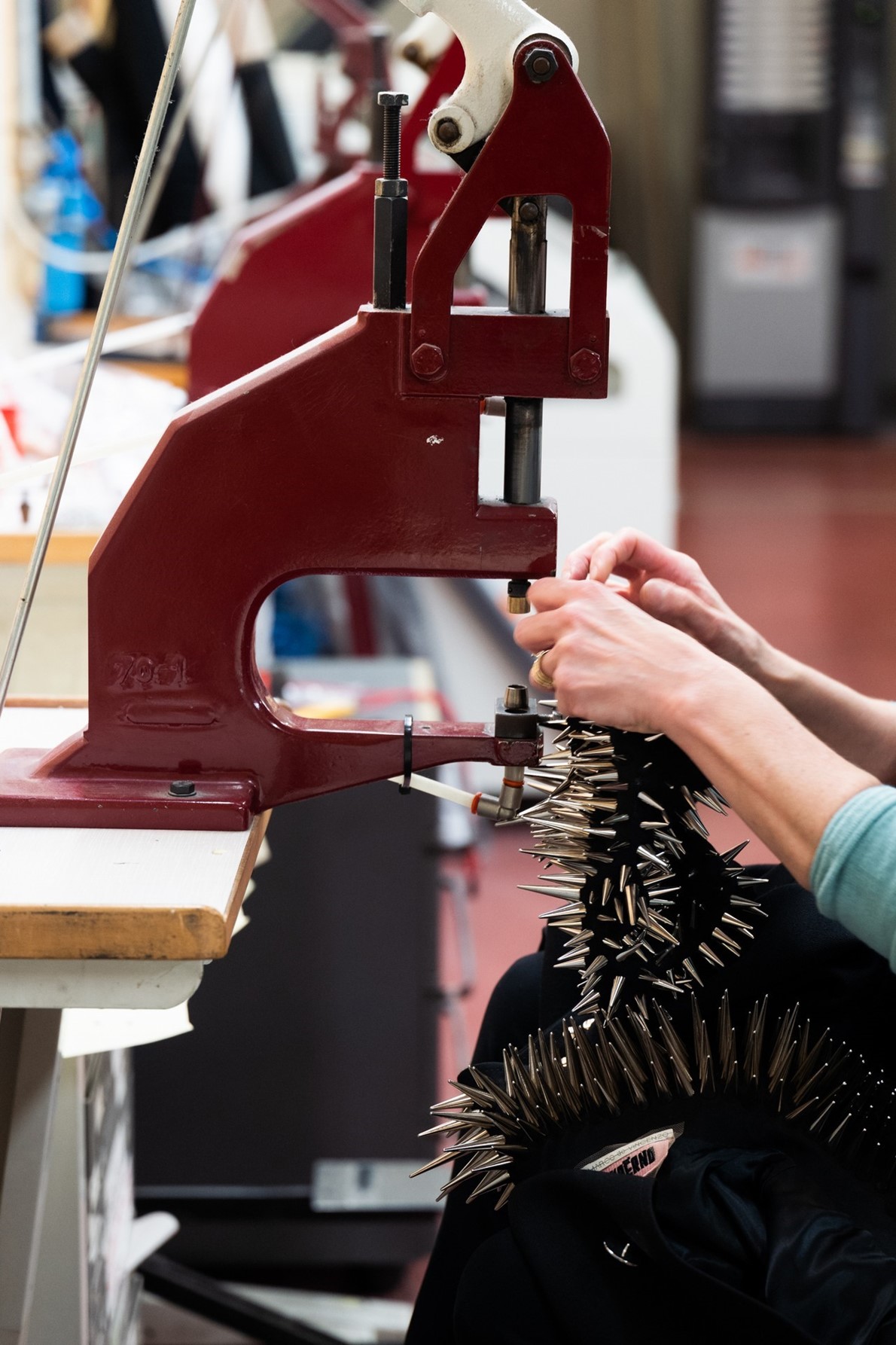“For me, fashion was always about fun and beauty,” said
Marco de Vincenzo, pacing his showroom at the Casa Galimberti, one of
Milan’s
most ornate art nouveau palazzos. “But today, fashion needs to convey more
important messages, and my own mission in fashion needs to go beyond mere
creativity.”
اضافة اعلان
De Vincenzo, 44, a Sicilian designer who has emerged as one of
the brightest new stars among the last decade of Milan’s runway calendar, was
surrounded by racks of the latest collection for his namesake brand. The
garments were evidence of his newfound sustainability imperative: At fashion
week in February, instead of newly manufactured clothes, he presented vintage
revamped with his own panache, covering coats, skirt suits, sweaters, and more
with meshes of sequins, fields of metal studs, and accents of shiny rivets in a
craftsmanship-intensive transformation of thrift-store finds into unique pieces
— some running over $2,000. De Vincenzo said the collection, called Supérno,
was a way to understand upcycling’s potential.
“Whatever I do next will be linked to this formula,” he said
last month, gazing into the distances of Milan beyond his window. “Perhaps I’ll
be in a new role on a bigger stage soon, and I’ll be able to incorporate this
principle if I’m guiding a larger brand.”

Then, on June 1, de Vincenzo was appointed the creative director
of Etro, the
Milan fashion house known for its high-end paisley prints and
made-in-Italy hippie glamour. Long a globally successful but family-run affair,
the LVMH-founded private equity group L Catterton purchased 60 percent of the
brand last year, with plans to expand its international growth. As the brand’s
first head designer from outside the Etro family, de Vincenzo will oversee its
offerings of womenswear, menswear, and interiors, while maintaining his
longtime position as the head designer of leather goods at Fendi.
“I hope to include upcycling in the first runway collection in
September or soon after,” he said in a recent interview, his first since the
announcement of his new role at Etro. “There’s much to be done to understand
what sustainability means when it comes to larger brands like this, but today
they’re at least embracing recycling for capsule collections and special
editions.”
From his own line’s fancified vintage to his future efforts at
Etro, he sees a new form of
luxury taking shape, with unique or small-run
pieces made from the inherently limited supplies of repurposed materials.
Although Etro declined to comment on what kind of project may happen under the
designer’s new leadership, in the past, the fashion house, which began as a
fabric mill and produced textiles for decades, has created capsule collections
from archival fabrics.

For de Vincenzo, a new path was illuminated during the
contemplative early years of the coronavirus pandemic, when there were no runway
shows to fret about, and his brand went on a two-year hiatus. In 2020, he
bought back shares that for years had been in the hands of LVMH, allowing for a
retreat from the high-paced, high-production, high-profit demands of working
with the powerful luxury conglomerate. When he later entered the Marco de
Vincenzo archive to take stock, he was overwhelmed by the sight of 6,000 sample
garments that never saw the light of day. “Such an immense quantity of
squandered ideas, resources, money, and time,” he lamented. “I know how much
effort artisans dedicated to these things.”
He returned with the upcycled clothes of the Supérno collection
— apparel he personally sourced from charity shops, which he then asked
artisans to embroider and embellish, producing iconoclastic twists on their
original ladylike forms. But only a couple of long-standing partners agreed to
give the niche project a shot. One that did was CIM, a factory north of Milan
that bedazzles fabrics with rhinestones, studs and spikes of all kinds, in partnership
with fashion houses like Balmain, Louis Vuitton, Versace,
Armani and
Prada.
(“The haute couture of strass,” as one riveter there put it.)
De Vincenzo’s vintage garments have to be worked on mannequins,
where the artisans map out rhinestones and chalk the placement of studs before
attaching them one by one — a far more time-consuming method than their typical
embellishment of fabrics laid flat on tables. And each Supérno piece is one of
a kind: a prim black swing coat with spikes splayed along the collar and cuffs;
a stern headmistress dress with Space Age silver bubbles trimming its bodice
and pleated hem; a figure skater’s short-sleeve sweater iced with rows of
faceted crystals. “Industrial production,” de Vincenzo said, “is out of the
question here.”

The Supérno collection received critical plaudits when it
debuted in Milan, but store buyers shied away, citing concerns that the
one-offs defied their merchandising protocols, the designer said, so the fall
season clothes will be sold on his proprietary website. But investors, he said,
have expressed interest, and he will carry on his namesake brand and its
mission of reuse, perhaps at a slower pace, as he heads up Etro and continues
designing accessories at Fendi.
Some of fashion’s biggest brands have responded to the call of
sustainability with efforts like Miu Miu’s special runs of remade vintage
dresses and restyled Levi’s, Marni’s patchwork coats of cut-up old clothes and
Coach’s handbags from 1970s-era archive purses. And de Vincenzo pointed out
that Fendi had made considerable efforts to use leather and fur remnants that
would have previously been discarded and to support artisan craftsmanship
against industrialization, which he called “another key aspect of
sustainability.” Still, with a few exceptions, these are small-scale projects
from large-scale brands.
The fashion industry encompasses countless actors — business
leaders, factories, investors, designers, retailers, every human who wears
clothes — who will have to agree to produce and buy less, and to make more out
of what we already have to fight the tidal wave of overproduction still
programmed into the supply chain at large.
“How much was written during lockdown about slowing down and
being more conscientious?” de Vincenzo asked. “But the old rhythms and
expectations are proving too deep-rooted.”

Yet to speak to the designer as he embarks on leading a global
luxury brand is to encounter an emissary of hope. His own upcycled line, like
perhaps all sustainability projects, is imperfect. Its surfaces of glitz from
CIM — of quartz, metal and polymers — are not sustainably produced or easily
recycled, and will have a lengthy life in a landfill. “There are always
compromises to be made,” de Vincenzo responded. “If I went looking for 100
percent perfection, I probably would never have been able to do anything. With
Supérno, I managed to stop producing new garments. We need to each consider
what we’re able to do.”
Read more Fashion
Jordan News



